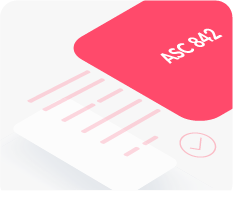
What is the difference between ASC 842 & ASC 840?
By
EZLease team
There are several key differences between the U.S. GAAP new accounting standards for leases (ASC 842) and the previous guidance (ASC 840), including new guidance on variable lease payments, reassessment of initial direct costs, and recognition of lease and non-lease components.
However, the two most important differences between ASC 842 and ASC 840 are the requirements for lessee balance sheet accounting and lessor classification of sales-type and direct financing leases. These changes will have a major impact on both lessees and lessors, and will require businesses to reevaluate their leasing arrangements going forward.
Lessee accounting: ASC 842 vs. ASC 840
Lessees are now required to record both an asset and a liability for virtually all leases on the balance sheet. The asset is based on the present value of future lease payments, and the liability includes both the principal and interest components of those payments. This represents a major change from ASC 840, which allowed lessees to keep operating leases off-balance-sheet.
Lessor accounting: ASC 842 vs. ASC 840
For lessors, the two main types of leases are still operating leases and finance leases. However, under ASC 842 there is a new classification for sales-type and direct financing leases. Sales-type and direct financing leases are similar to finance leases under ASC 840, in that they result in the recognition of lease income over the life of the lease (rather than on a straight-line basis). The main difference is that, under ASC 842, lessors must now classify leases as sales-type or direct financing based on whether the underlying asset is expected to be sold to the lessee at the end of the lease term.
Compliance with ASC 842
ASC 842 is effective for reporting periods beginning after December 15, 2021 for all private companies, with early adoption permitted. Lessees and lessors will need to comply with the new standard for all leases entered into or modified after the effective date. For lessees, this means recognizing a lease asset and liability on the balance sheet for virtually all leases. For lessors, it means reclassifying some leases as sales-type or direct financing, which will impact the recognition of lease income.
The FASB has also issued several practical expedients that businesses can elect to use in order to simplify compliance with ASC 842. These include an exemption from reassessing classification for existing leases and a transition method for recognizing initial direct costs incurred under the new standard.
Choosing lease accounting software for ASC 842
Lease accounting software like EZLease helps businesses comply with ASC 842 standards. For lessees, EZLease allows you to track and manage lease portfolios, calculate lease payments, and recognize assets and liabilities on the balance sheet. For lessors, you can classify leases, calculate lease income, and generate audit-ready financial statements.
Get started with a free trial of EZLease and be sure to see our pricing options.



